Floating has many potential benefits for 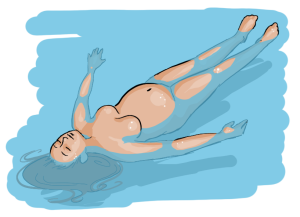 both mom and baby, and so it’s not surprising to see a growing trend in floating while pregnant. Some take on floating to help reduce back pain, while others just love to hear their baby’s heartbeat without anything else around to distract them.
both mom and baby, and so it’s not surprising to see a growing trend in floating while pregnant. Some take on floating to help reduce back pain, while others just love to hear their baby’s heartbeat without anything else around to distract them.
The rise in floating while pregnant has sparked some questions. While medical questions are best left to your doctor, we wanted to provide some tips for one of the most common queries we hear: how can I comfortably float while pregnant?
First, it goes without saying that you should definitely check with your doctor before floating, just in case you may have some unique contraindications that prevent the below advice from applying to you.
Generally, it is safe to float on your back or on your belly. Outside of the tank, laying on your back would be risky for the health of the mom and the baby, however, in the weightlessness of a sensory deprivation tank this doesn’t appear to be the case.*
Comfortable Positions for Pregnant Floaters
Successfully accomplishing the following positions will depend on factors such as height, body type, and ultimately personal preference, so take them as general suggestions and starting points to find what works for you.
Floating belly down can be a real release of pressure during pregnancy: a lot of the weight of the growing uterus pushes against the mother’s organs, and letting the salt water support this weight for 90 minutes can be quite blissful.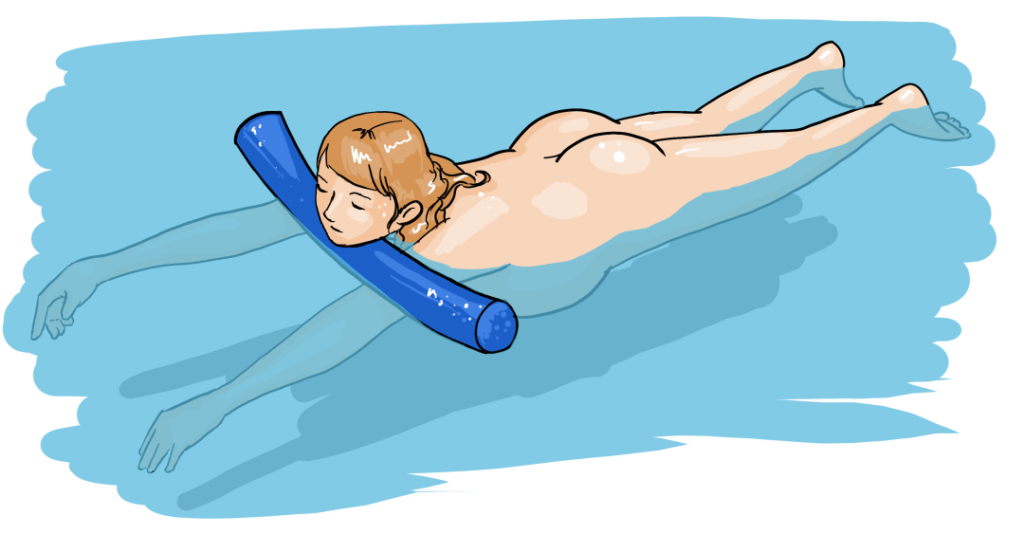
One position that pregnant floaters report as comfortable is laying on their belly while they float, with their arms across or under a pool noodle, and the noodle under the chin to keep their face out of the water. Even if you fall into a much-needed nap during your float, your head will remain supported by the noodle.
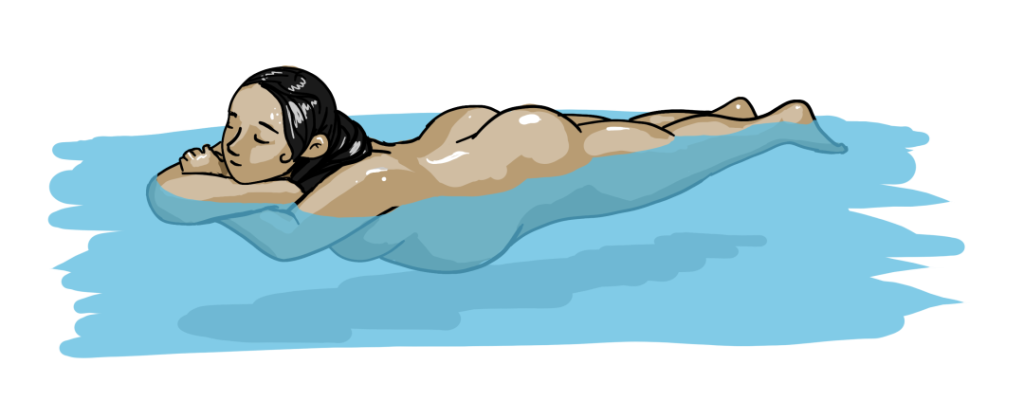
You may also be comfortable simply crossing your arms under your chin and floating belly down in the water, resting your head on your forearms to keep your face dry. This is very similar to floating with a pool noodle and might be preferable for some.
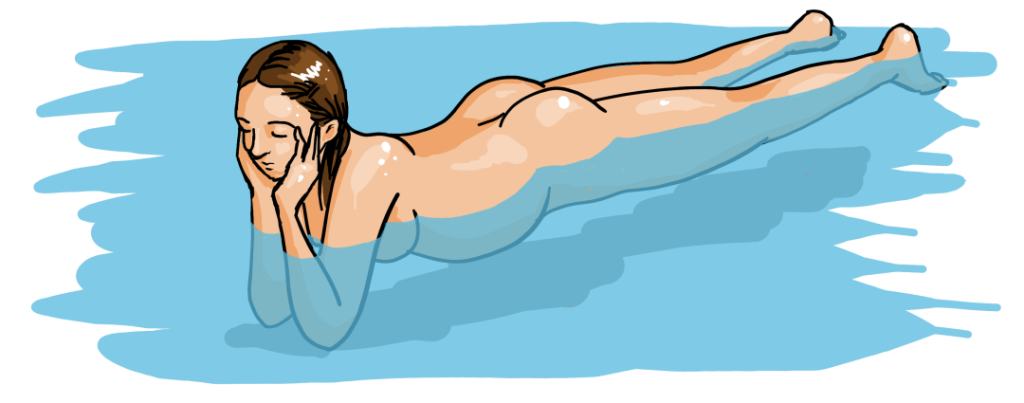
Another suggestion for floating belly down in the water is to put your elbows on the floor of the tank and cradle your chin in your hands. The depth of the water is approximately the length of many people’s forearms, so it may be possible for you to keep your face dry and mouth comfortably out of the water. Some floaters say this is a really satisfying position that also provides a great stretch to the spine.
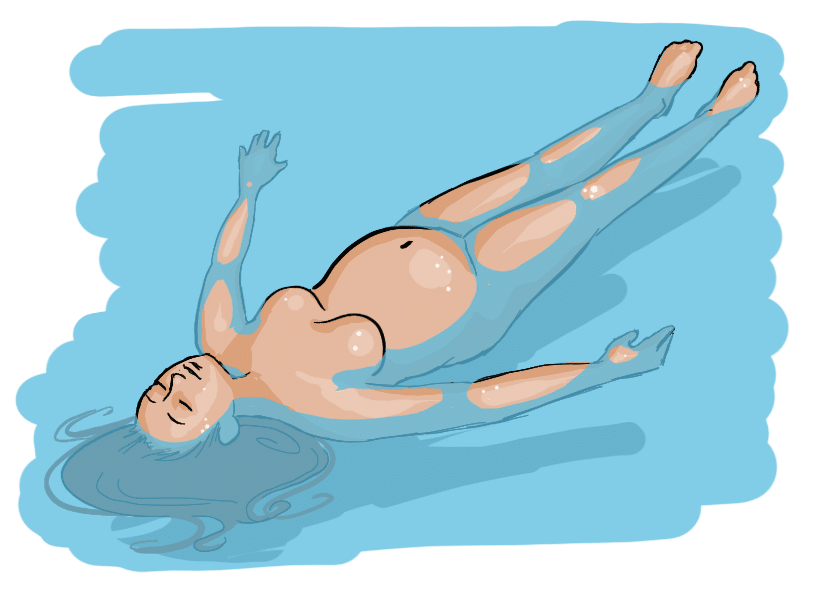
As far as tips for floating on your back (once you’ve gotten your doctor’s approval), you could use a noodle or inflatable pillow under your lower back, but you probably won’t need it. Chances are that the Epsom salt will support you (and your baby) beautifully.
Potential Concerns
The conditions of every pregnancy can be different and all expecting mothers should seek the approval of their doctor before floating.
Some sources online state that women should not float during their first trimester. There is no data we’ve found to support this concern, but it seems reasonable that it’s in place because it’s more likely for miscarriages to happen during the first trimester.
Definitely take all of the information presented in this blog post with a grain of salt, and make sure that you consult your doctor before making any decisions. However, from many reports of personal experiences, floating through pregnancy can be a real load off – both the body and mind.
Here’s a link over to a personal blog about floating while pregnant as well, the author of which this post was adapted from.

